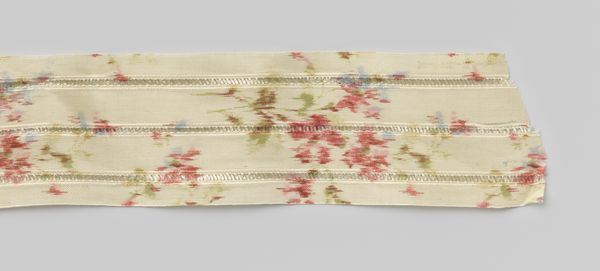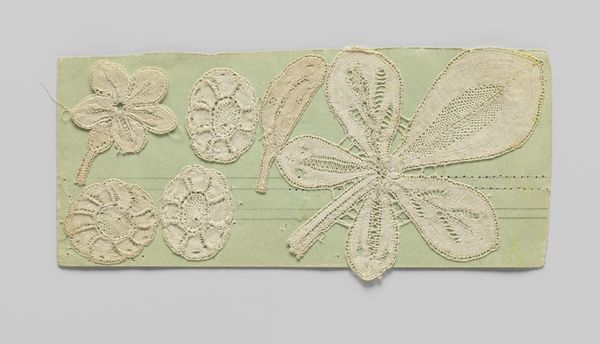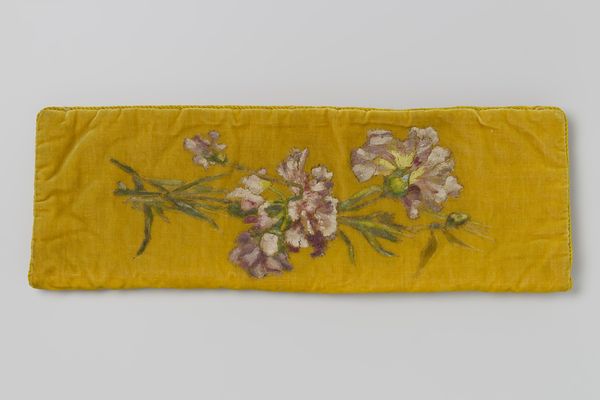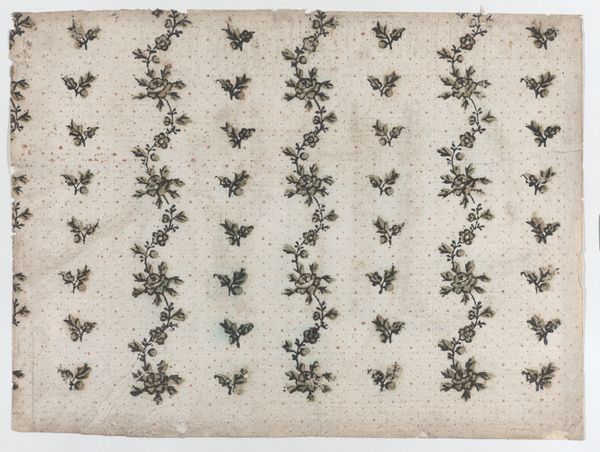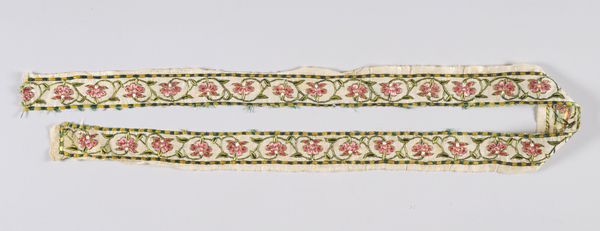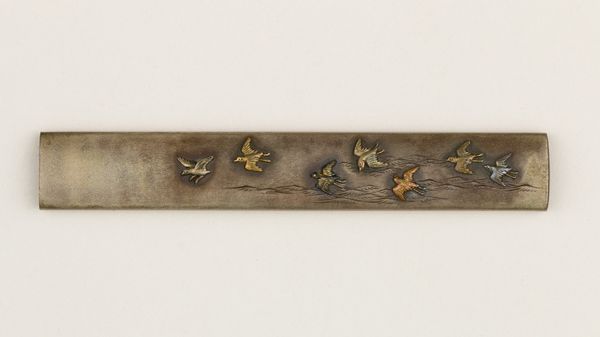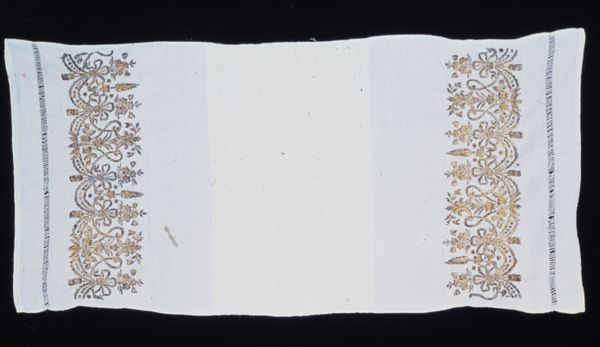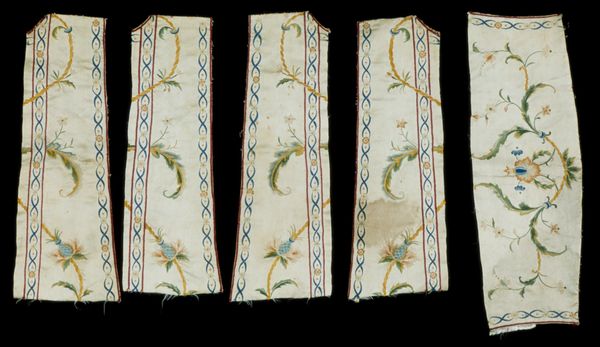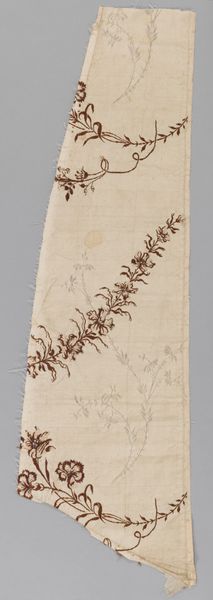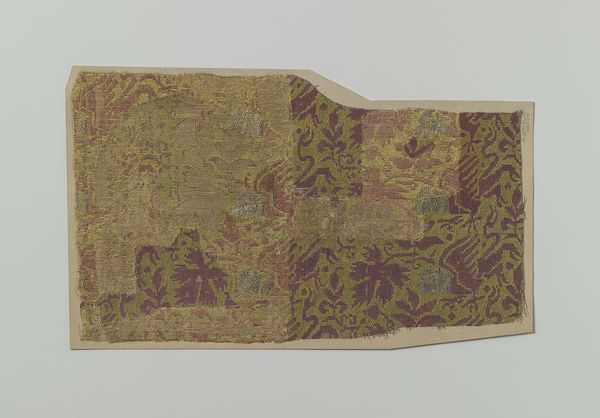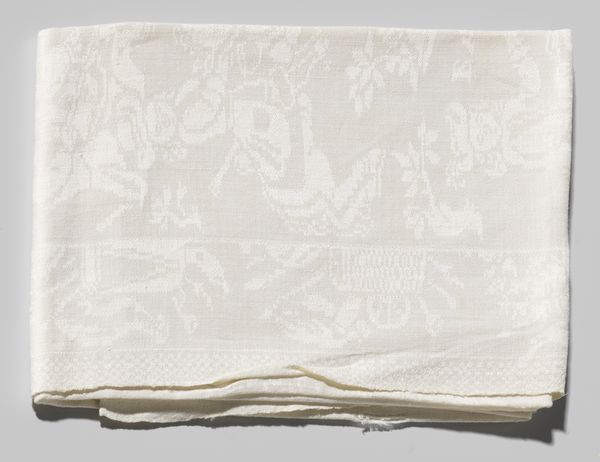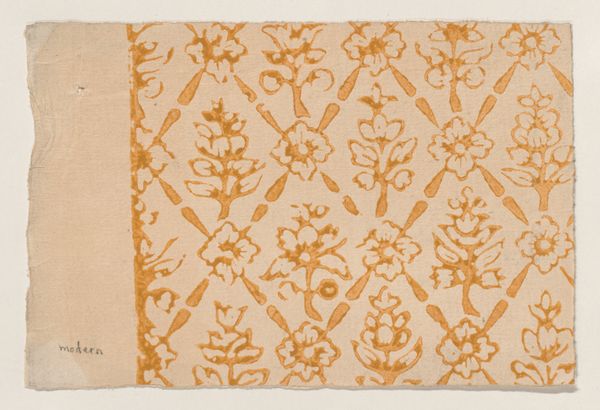
Rol chiné-lint (?) met drie banen ajourwerk en gedrukt bloemmotief in blauw en groen op karton c. 1875 - 1900
0:00
0:00
fibre-art, textile
#
fibre-art
#
arts-&-crafts-movement
#
pattern
#
textile
#
flower pattern
#
repetition of pattern
#
regular pattern
#
pattern repetition
#
decorative-art
Dimensions: width 6.0 cm, height 8.1 cm, diameter 8.2 cm
Copyright: Rijks Museum: Open Domain
Editor: Here we have a "Rol chiné-lint," dating from around 1875 to 1900. It's a textile fragment featuring ajouré openwork and a printed floral motif, created using a chiné technique in blue and green ink on paper-backed textile. The overall effect is delicate, almost faded, with this repetitive floral design. What can you tell me about its structure? Curator: What strikes me immediately is the rhythmic arrangement of the design elements. We see a distinct tripartite division of the field, established by the horizontal bands of openwork. These bands act as visual anchors. Then, note the controlled distribution of the floral pattern across the textile; each blue and green cluster is subtly distinct. Does the composition itself evoke anything specific for you? Editor: It feels balanced, not chaotic despite the busy floral pattern. The use of horizontal lines definitely brings visual order. But it also makes me wonder why it was designed this way, the relationship between the horizontal lines and the placement of the floral details. Curator: Precisely. The considered interplay between the ground and the figure is the core compositional element. Semiotically, we might explore how the hard linearity of the openwork and linear organization relates to the floral. Further investigation is necessary to evaluate how this interplay impacts the reading and appreciation of the work. How do you see the role of color in relation to that organization? Editor: The restrained palette creates a softer effect than, say, a boldly contrasting design. It also complements the openness of the weave. It keeps a viewer in calm waters while having a variety of shapes, rather than creating the need for bold lines to balance a viewing. Curator: It's this very subtlety that invites close viewing. It pushes back from pure functionality or commercial impact in ways that ask more conceptual questions of the artist and the viewer than it delivers simple, pretty repetition. It would require careful thought to appreciate in its time just as today. Thank you for observing it in such astute company. Editor: Yes, looking beyond just the flowers, the color balance and the placement within horizontal bands, I begin to see the questions behind it too.
Comments
No comments
Be the first to comment and join the conversation on the ultimate creative platform.
